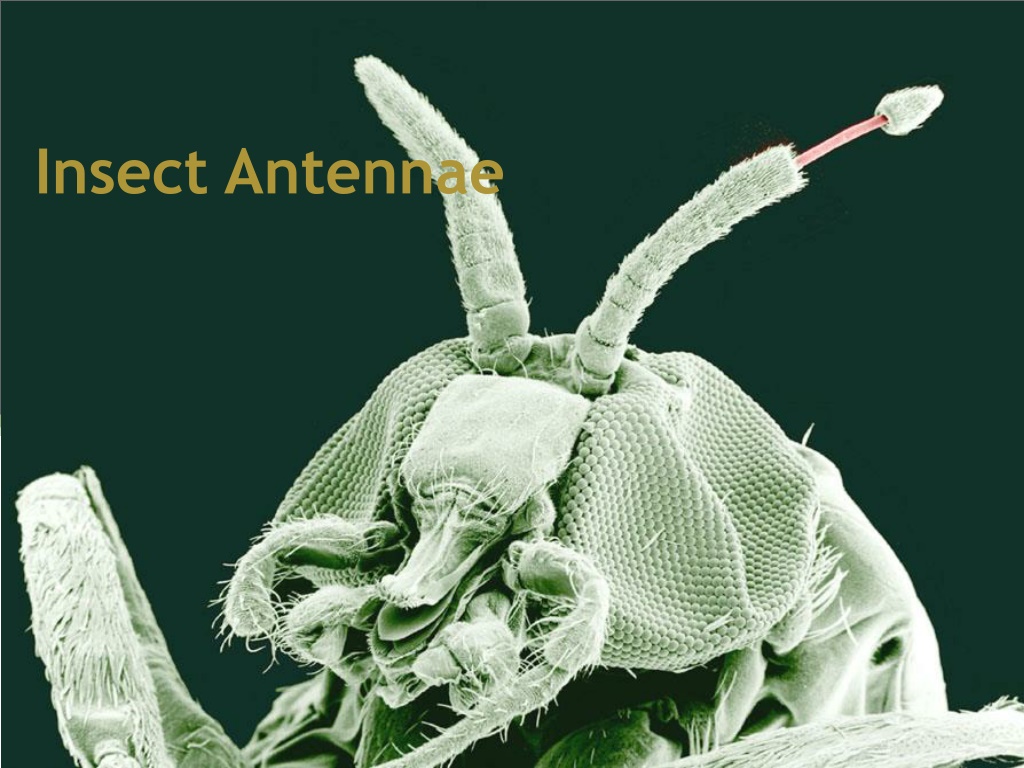Exploring the Fascinating World of Insect Antennae
Insect antennae serve as vital sensory organs for these creatures, offering more than just a sense of touch. They play key roles in detecting odors, changes in humidity, sounds, and air speed. This article delves into the diverse types of insect antennae, showcasing their unique structures and functions, from filiform to bipectinate forms found in various insect species.
Download Presentation

Please find below an Image/Link to download the presentation.
The content on the website is provided AS IS for your information and personal use only. It may not be sold, licensed, or shared on other websites without obtaining consent from the author. Download presentation by click this link. If you encounter any issues during the download, it is possible that the publisher has removed the file from their server.
E N D
Presentation Transcript
The antennae are a pair of sense organs located near the front of an insect's head capsule. Although commonly called "feelers", the antennae are much more than just tactile receptors. They are usually covered with olfactory receptors that can detect ordor molecules in the air (the sense of smell). Many insects also use their antennae as humidity sensors, to detect changes in the concentration of water vapour. Mosquitoes detect sounds with their antennae, and many flies use theirs to gauge air speed while they are in flight.
Although antennae vary widely in shape and function, all of them can be divided into three basic parts: scape -- the basal segment that articulates with the head capsule pedicel -- the second antennal segment. flagellum -- all the remaining "segments" (individually called flagellomeres).
Filiform antennae: This is the most basic form of insect antennae. This basic structure is modified in a wide variety of ways. This means that a number of different types may be recognised. (Orthroptera)
Setaceous - There are many joints. The antenna tapers gradually from the base to the tip e.g. Cockroaches, Stoneflies.
Moniliform - The round segments make the antenna look like a string of beads e.g. Beetles.
Serrate - the segments are angled on one side giving the appearance of a saw edge e.g. Beetles.
Pectinate - The segments are longer on one side. This gives the appearance of a comb e.g. Sawflies (related to wasps) and Beetles.
Clavate - the segments become wider towards the tip of the antenna. This may be gradual along its length, or a sudden increase and therefore mainly affecting the last few joints and giving the appearance of a club e.g. Butterflies and Beetles.
Lamellate - the segments towards the end are flattened and plate-like. This gives the appearance of a fan e.g. Beetles
Plumose and Piplumose - the segments each have a number of fine thread-like branches. This gives the appearance of a feather e.g. Flies.
Capitates: Capitate antennae are abruptly clubbed at the end. Ex. Butterflies.
Aristate: pouch-like with lateral bristle. Ex. House flies
Geniculate: there is an abrupt bend or elbow part of the way along the antenna e.g. Ants and Beetle
Stylate: having a pointed process, a style. Aristate is similar, but the process is off-center























